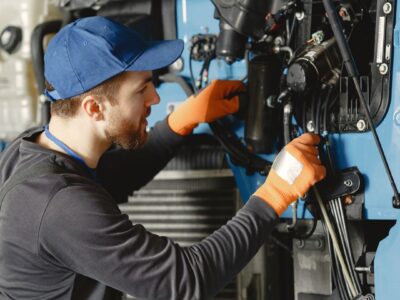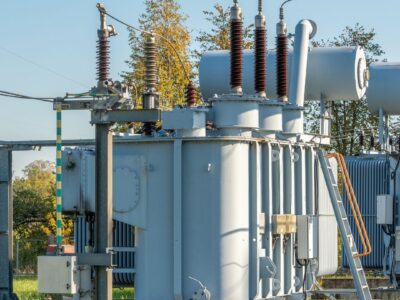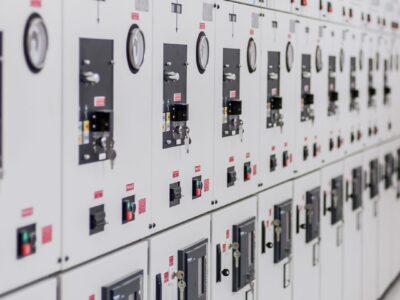ASSET MANAGEMENT, MAINTENANCE AND CONDITION MONITORING
Assets undergo wear and tear over time, and if not managed and maintained properly, can lead to breakdowns, downtime, revenue loss, low plant availability, and other issues. For organizations operating in heavy process industries, maximizing the return on investment of …
Overview
Assets undergo wear and tear over time, and if not managed and maintained properly, can lead to breakdowns, downtime, revenue loss, low plant availability, and other issues. For organizations operating in heavy process industries, maximizing the return on investment of physical assets while operating safely and in an environmentally responsible manner is more critical than ever. Hence, asset owners are looking for ways to manage assets throughout their lifecycle. Often, the efforts to maintain uptime, improve safety, and ensure compliance lack alignment with each other. As a result, facilities can waste precious time, funds, and resources accomplishing each effort individually. In January 2014, the International Organization for Standardization (ISO) published the ISO 55000 family of standards for asset management. In 2015, the SABS adopted ISO 55000 as a national standard (SANS 55000: 2015). By aligning the efforts to maintain uptime, improve safety, and ensure compliance under a common, comprehensive asset management system as outlined in the SANS 55000, facilities can experience greater returns on asset investment.
This two-day course will cover an overview of SANS 55000 & ISO 55000, maintenance techniques, TPM, RCM, maintenance planning and scheduling, Maintenance KPIs, Asset management over the life cycle, Root Cause Analysis of asset failures, Computerized Maintenance Management System and Condition Monitoring Tools and Systems for asset management.
WHO SHOULD ATTEND THIS EVENT?
- Engineers
- Asset managers
- Maintenance Managers,
- Maintenance Supervisors,
- Maintenance Engineers
- Infrastructure Managers
- Operations Supervisors and managers
- CMMS Administrator or key users,
- Maintenance support assistants,
- Anybody involved in Asset & Facilities Management
Workshop outline
DAY 1
Module 1: Introduction to Asset Management (SANS 55000 & ISO 55000)
- Definitions of an Asset and Asset Management (AM)
- Asset Management Life Cycle
- Components and Benefits of AM
- History of ISO 55000/SANS 55000
- Introduction to ISO 55000 family of standards
- Obstacles and failures in asset management and the impact of these failures
- Ways to overcome the obstacles
Module 2: Total Productive Maintenance (TPM)
- Types of maintenance
- The concept of Total Productive Maintenance (TPM)
- History of TPM; Aims of TPM; Five Pillars of TPM
- Similarities and Differences between TQM & TPM
- Process quality management
- TPM in administration and support department
- Promotion and Implementation of TPM
Module 3: Reliability Centred Maintenance (RCM)
- Introduction to RCM
- TPM vs RCM
- Failure patterns where scheduled maintenance is applicable
- Failure patterns that will not respond positively to scheduled maintenance
- Failure pattern for modern industry
- The RCM process and objections
- The RCM decision diagram and decision Worksheet
- Alternative and Modified forms of RCM
- The Post-RCM Situation
Module 4: Maintenance planning and scheduling
- Introduction to Planning and Scheduling
- Planning and Scheduling Objectives
- Maintenance planning and scheduling
- Classification of Maintenance Work According to Planning and Scheduling Purposes
- Planning Procedures
- Basic Levels of Planning Process
- Long and Medium-Range Planning
- Elements of Sound Scheduling
- Scheduling Procedures (Steps)
- Maintenance Job Priority System
- Scheduling Techniques
Module 5: Maintenance key performance indicators
- What is a KPI
- How can the success of the PM program be determined?
- Maintenance Indicators
- Planned Maintenance Indicators
DAY 2
Module 6: Asset management over the life cycle
- Life-cycle management
- Life-cycle costing
- Retrofits and additions
- Reliability, Availability and maintainability (RAM) analysis
- Cost of unavailability or lost production
Module 7 Root Cause Analysis of asset failures
- The Five Whys
- Ishikawa (fishbone diagram)
- ASSET methodology
- Fault Trees
- Apollo
Module 8: Computerized Maintenance Management System
- Definition of Computerized Maintenance Management System (CMMS)
- Components of CMMS
- Benefits of CMMS
- Implementation Plan
- Process Automation and the CMMS
- CMMS Options
- CMMS Needs Assessment
- CMMS Capabilities
Module 9: Condition monitoring Tools and Systems for asset management
- Predictive Maintenance
- Common predictive technology applications
- Equipment and service categories
- Available products and services
- Vibration monitoring/ Analysis
- Non-destructive testing NDT
- Eddy current
- Magnetic particle testing (MT) – NDT of Wire Rope – Electromagnetic Testing
- Penetrant Testing (PT)
- Radiographic testing
- Ultrasonic testing (Ultrasonic Inspections )
- Visual testing
- Non-destructive tests on the brake rods and pins of a man winder
- Wear particle analysis
- Techniques for recovering wear particles from oil
- Wear Particle types
- Lubricant, fuel analysis (Lubrication Condition monitoring (LCM))
- Bearing temperature analysis
- Oil Analysis
- Infrared Thermography
- Insulation resistance
- Polarization index
- Motor current signature analysis
Assessment




